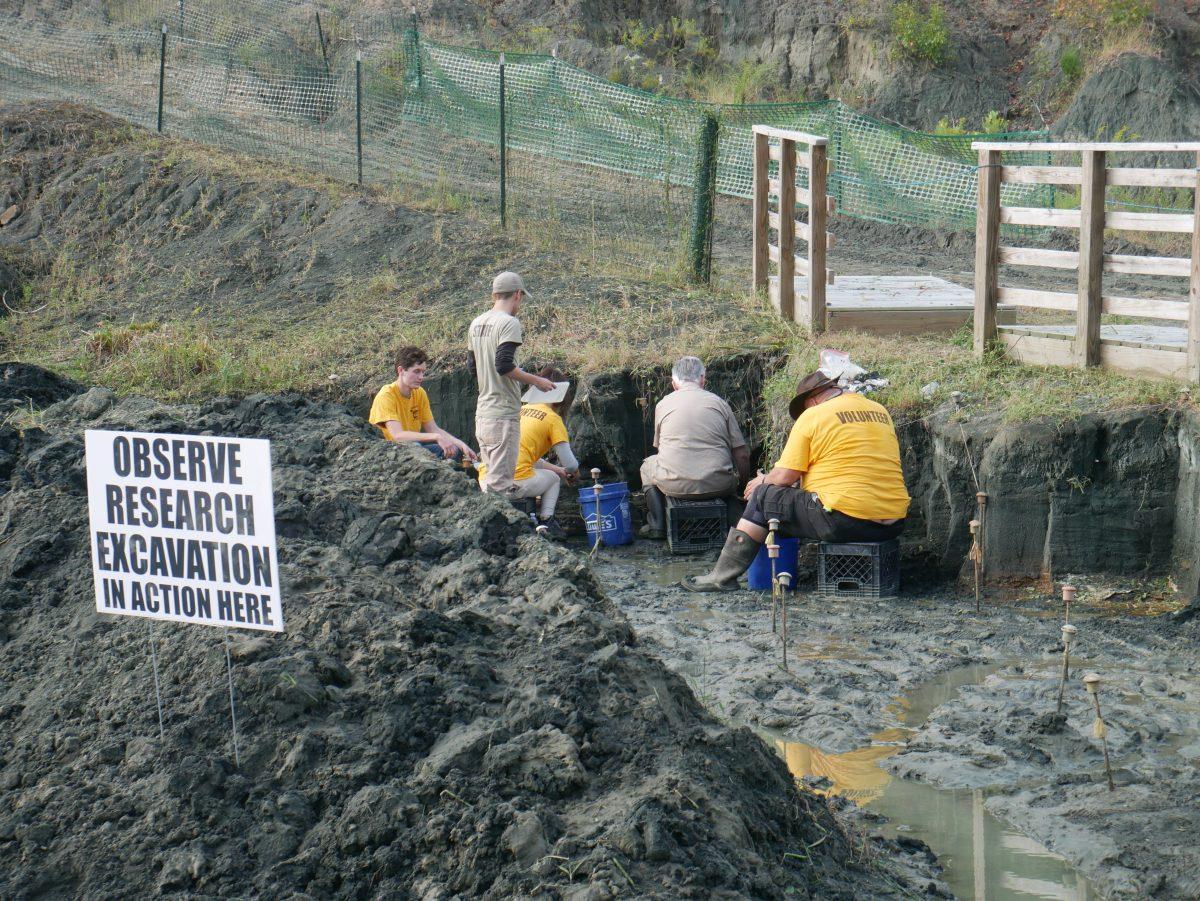Can you find dinosaurs in the Jean and Ric Edelman Fossil Park at Rowan University? Why is the sand green? How old are the fossils in there? How do you gain access to digging for fossils in there? And why do we care so much about this site anyway?
Rowan University offers a suite of unique experiences within the Edelman Fossil Park (EFP), which offer valuable paleontology insights to both researchers and to students of any major. If you’ve ever been interested in learning more, this article is a good place to begin.
Are the fossils real?
It can be difficult to contextualize that so many fossils have lain undisturbed behind a Lowe’s in Mantua Township for millions of years. I’ve been asked several times whether EFP is just a tourist attraction that outsources fossils from elsewhere, dumps them in the ground and calls it a day.
However, geology is vast and often surprising. Not only are the fossils “real,” they are of great cultural and scientific importance to our entire community, from South Jersey to the rest of the world.

Why is this site so important?
Much like rocks themselves, human understanding of geology is forever changing. The theory that dinosaurs were killed off mostly due to an asteroid impact has only been widely accepted for less than thirty years. One of the lines of evidence for this impact event is a global layer of the element iridium, which is not common on Earth but is common within asteroids.
Species in the Main Fossiliferous Layer at EFP are traditionally thought to be from the Mesozoic, the era of the dinosaurs which ended 66 million years ago with that asteroid impact. Everything below the iridium layer is the Mesozoic; everything above is the Cenozoic, the era we are in today. However, these fossils are found above the iridium layer. This means that they died almost directly after the asteroid collided with Earth!
EFP is one of the few places on Earth where scientists can determine that these prehistoric animals died due to the asteroid collision. The timing of when these fossils died can shed much light on the mechanics of the resulting Cretaceous/Paleogene mass extinction. Because the preservation of EFP’s fossils is so unique, understanding it can deepen global understanding of the event that killed the dinosaurs.
Can I find dinosaur bones there?
Well… never say never. But it is extremely unlikely to find a dinosaur, due to the paleoenvironment of New Jersey; during the Mesozoic, climate was much warmer, sea levels were hgher and New Jersey was underwater.
As such, most fossils in EFP are marine, and mostly invertebrates (animals that don’t have a backbone), turtles or crocodiles. For a dinosaur bone to reach EFP would require the dinosaur to die offshore and then for its body to float into the ocean and be deposited there.

Why is the sand green?

The sand of the Hornerstown Formation, where most fossils are located, is rich in a green mineral called glauconite. Glauconite is clayey and often pellet-shaped; it is usually associated with low-oxygen and marine shelf environments where ample life can biochemically reduce iron-bearing flaky minerals known as micas.
Basically, the sand is green because of the abundance of underwater life in Mantua Township 66 million years ago.
How can I see the fossils myself?
The most common way to visit EFP is on a Community Dig Day – but be prepared for when tickets go on sale, since they sell-out fast. For current Rowan students, another great way to get involved is by taking the Edelman Fossil Park Experience course offered in the fall. In this class, students of any major assist in paleontology research, as well as STEM education outreach.
According to Dr. Kristyn Voegele, Assistant Professor of Geology and paleontology researcher at EFP, students can also volunteer their time to help further Rowan’s impact on paleontology.
“The Fossil Park is always looking for volunteers either to help excavate fossils, assist at events, or prepare fossils in the Paleo Lab on campus,” Dr. Voegele said.” Usually, there is at least one Rowan Dig Event every fall. Sometimes it is associated with Family Weekend and often there is also a Rowan Alumni Dig. These Rowan Events often offer more one-on-one interaction with Fossil Park scientists.”
“Anyone interested in events or volunteering can email Dr. Alison Moyer: [email protected],” she added.
What will the future hold for the site?
Because of Jean and Ric Edelman’s 2016 donation of $25 million for the school to purchase the quarry, there are plans to construct a world-class research museum detailing the history of this very site.
For more information, visit the EFP webpage.
For comments/questions about this story, email [email protected] or tweet @TheWhitOnline.

























































































































































!["Working with [Dr. Lynch] is always a learning experience for me. She is a treasure,” said Thomas. - Staff Writer / Kacie Scibilia](https://thewhitonline.com/wp-content/uploads/2025/04/choir-1-1200x694.jpg)









































